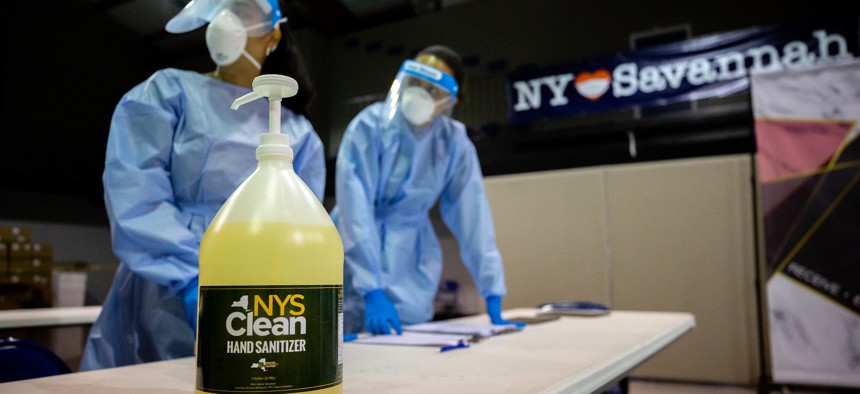Here’s a coronavirus hypothetical: An older lady lives with her 30-something grandson, who goes outside the home to work, shop and otherwise live life as normally as someone can during a pandemic. She is mostly stuck at home because of her age and underlying health conditions. He is a relatively healthy person who comes into contact with other people all the time. Who should get vaccinated for the coronavirus first?
Current vaccination plans use a multi-stage process to determine who gets future COVID-19 vaccines as they become available. Generally speaking, older and more medically vulnerable people will get first dibs while younger, healthier people will have to wait. But that might be the wrong way to distribute a limited amount of vaccines for a disease that is disproportionately spread by a small fraction of infected people, public health experts say.
There is some science backing a vaccine approach that protects vulnerable people by inoculating others against the coronavirus first. “A vaccine with strong indirect effects has the potential to reduce SARS-CoV-2 circulation and COVID-19 deaths to a greater extent than an alternative vaccine with stronger direct effects but weaker indirect effects,” reads one study published over the summer, which has not yet been peer-reviewed. A 2009 study on influenza suggests that schoolchildren and young adults are populations where vaccinations could cut down on a large amount of viral spread.
City & State caught up with Dr. Syra Madad, senior director of the System-wide Special Pathogens Program at NYC Health + Hospitals, Thursday to hear her thoughts on how much policymakers should be focusing on vaccinating the most infectious people. “This is something that we need to start discussing now,” she said. The interview has been edited for length and clarity.
What do you make of the idea of focusing vaccination efforts more on the people who spread the coronavirus the most?
It’s funny you asked this question, because I was just discussing this with colleagues. The current tiered prioritization is based on high-risk settings – those that first are higher-risk for contracting the diseases, those that are higher-risk for having a severe outcome, getting hospitalized and dying. If you look at the pandemic, the people who are propagating the disease are the younger population that may not be at severe risk.
When it comes to prioritizing the first supplies of a vaccine, can a balance be struck between these approaches?
We should prioritize those that obviously are at higher risk, but also look at those, as I’ve mentioned, that are propagating the epidemic further. This is something that we need to start discussing now. Do we want to have a subset of the vaccines go to these higher-risk people and another subset go to those that are propagating the epidemic? I think we can have these conversations in parallel.
Do we know enough yet to identify who is spreading the coronavirus the most?
We’ve known with previous novel viruses, bacteria, and microbes, in general, you learn in real time. You learn new bits of information as years and generations pass that may have an overall impact on the decisions you’re making today. But I think we have learned enough in the past 10 months to be able to make better informed decisions on how we can exit out of this pandemic safely, effectively, and rapidly.


